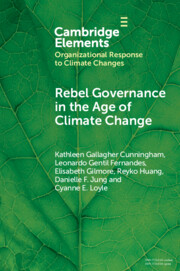Refine search
Actions for selected content:
1174 results
Chapter 10 - Science
- from Part II - Themes and Issues
-
-
- Book:
- The Cambridge Companion to Modernist Theatre
- Print publication:
- 11 September 2025, pp 180-197
-
- Chapter
- Export citation
Islamic Normative Legal Theory: Framework and Applications
-
- Journal:
- Journal of Law and Religion , First View
- Published online by Cambridge University Press:
- 27 August 2025, pp. 1-31
-
- Article
-
- You have access
- Open access
- HTML
- Export citation
Mental health and the environment – evolutionary perspectives
-
- Journal:
- Irish Journal of Psychological Medicine , First View
- Published online by Cambridge University Press:
- 22 August 2025, pp. 1-6
-
- Article
- Export citation
13 - Joyce and Nature
-
-
- Book:
- The Cambridge Companion to James Joyce
- Published online:
- 14 August 2025
- Print publication:
- 21 August 2025, pp 216-231
-
- Chapter
- Export citation
Introduction to volume III
-
-
- Book:
- The Cambridge History of War
- Published online:
- 18 July 2025
- Print publication:
- 14 August 2025, pp 1-52
-
- Chapter
- Export citation
From evidence to action: implementing the Nordic Nutrition Recommendations in national policy
-
- Journal:
- Proceedings of the Nutrition Society , First View
- Published online by Cambridge University Press:
- 04 August 2025, pp. 1-12
-
- Article
-
- You have access
- Open access
- HTML
- Export citation
Termination of a simulated failed corn stand and timing interval for replanting corn or soybean
-
- Journal:
- Weed Technology / Volume 39 / 2025
- Published online by Cambridge University Press:
- 24 July 2025, e80
-
- Article
-
- You have access
- Open access
- HTML
- Export citation
Paying it forward- Tohu Manawa Ora | Healthy Heart Award makes an investment in tamariki and early learning environments
-
- Journal:
- Proceedings of the Nutrition Society / Volume 84 / Issue OCE2 / June 2025
- Published online by Cambridge University Press:
- 24 July 2025, E172
-
- Article
-
- You have access
- Export citation
Excavating Alcatrazes, Santiago Island, Cape Verde: early colonial impacts on land, people and material culture
-
- Journal:
- Antiquity , First View
- Published online by Cambridge University Press:
- 15 July 2025, pp. 1-9
-
- Article
-
- You have access
- Open access
- HTML
- Export citation
Chapter 40 - Ecocriticism
- from Part VI - Critical Understandings
-
-
- Book:
- Sean O'Casey in Context
- Published online:
- 23 June 2025
- Print publication:
- 10 July 2025, pp 435-444
-
- Chapter
- Export citation
A reverse J-shaped association between adherence to planetary health diet and all-cause and cause-specific mortality in Japan: a cross-sectional prefecture-level ecological study
-
- Journal:
- Journal of Nutritional Science / Volume 14 / 2025
- Published online by Cambridge University Press:
- 02 July 2025, e45
-
- Article
-
- You have access
- Open access
- HTML
- Export citation
Environmental considerations in health technology assessments performed by Canadian agencies
-
- Journal:
- International Journal of Technology Assessment in Health Care / Volume 41 / Issue 1 / 2025
- Published online by Cambridge University Press:
- 25 June 2025, e38
-
- Article
-
- You have access
- Open access
- HTML
- Export citation
2 - Sustainable Economic Development
- from Part I - Introduction and Key Concepts
-
- Book:
- Economics for a Sustainable World
- Published online:
- 14 July 2025
- Print publication:
- 12 June 2025, pp 32-68
-
- Chapter
- Export citation
4 - Environments for learning
-
- Book:
- Intentional Practice with Infants and Toddlers
- Published online:
- 17 June 2025
- Print publication:
- 12 June 2025, pp 82-111
-
- Chapter
- Export citation
1 - Economics and the Environment
- from Part I - Introduction and Key Concepts
-
- Book:
- Economics for a Sustainable World
- Published online:
- 14 July 2025
- Print publication:
- 12 June 2025, pp 3-31
-
- Chapter
- Export citation
5 - Promoting physical health for holistic wellbeing
-
- Book:
- Intentional Practice with Infants and Toddlers
- Published online:
- 17 June 2025
- Print publication:
- 12 June 2025, pp 112-135
-
- Chapter
- Export citation

Rebel Governance in the Age of Climate Change
-
- Published online:
- 06 June 2025
- Print publication:
- 03 July 2025
-
- Element
-
- You have access
- Open access
- HTML
- Export citation
Where Europe ends, where Africa begins: Transimperial dryland science in the Italian south (1900s–40s)
-
- Journal:
- Journal of Global History , First View
- Published online by Cambridge University Press:
- 27 May 2025, pp. 1-22
-
- Article
-
- You have access
- Open access
- HTML
- Export citation
Colonialism, Governance, and Fisheries: Perspectives from Lake Malawi
- Part of
-
- Journal:
- The Journal of African History / Volume 66 / 2025
- Published online by Cambridge University Press:
- 23 May 2025, e1
-
- Article
-
- You have access
- Open access
- HTML
- Export citation
“Sodabi Calamity Number One”: The Production of Palm Alcohol in Dahomey and its Repression, 1840–1975
-
- Journal:
- The Journal of African History / Volume 66 / 2025
- Published online by Cambridge University Press:
- 23 May 2025, e2
-
- Article
-
- You have access
- Open access
- HTML
- Export citation
